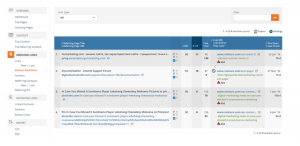Do you need help convincing your CEO or CFO that attribution will pay off? Columnist Liane Dietrich has four ways to build your case and justify the expense to your organization.

If you’re a marketer, you probably know the feeling — You’re looking back at last quarter’s performance, facing the hard truth that a large portion of your marketing budget seems to have been wasted. You’re navigating multiple performance reports from several vendors across all of your marketing channels, and it’s hard to know exactly where things are going wrong.
Not having a clear idea of where there’s overlap in the reported performance, trying to compare different business models side-by-side, and feeling that the last couple of budget increases you’ve divvied to your highest last-click performers aren’t paying off — It feels almost impossible to figure out where things are falling apart.
An attribution model provides the kinds of performance insights that will empower you to determine where the problems lie. But how can yet another marketing expenditure be justified? Especially when you’re already facing underperformance of your marketing budget.
Many marketers are struggling to justify spending budget on attribution technology. Top executives may say, “We’re already putting X dollars toward marketing, and it’s unclear if it’s paying off. How can we justify spending even more to prove we are or aren’t achieving our return on ad spend goals?”
I’ve compiled four tips for creating a winning business case for attribution that will help you convince any CFO or CEO that attribution is an investment that will pay off.
1. Identify Meaningful Numbers
Attribution is not just another marketing expense. It’s an investment that drives positive returns.
By revealing what percentage of your marketing activity is not driving incremental value, and where in the customer journey it’s happening, attribution empowers you to re-invest that budget where you’ll get better results. It also gives you the data to show your CEO and CFO that you’re optimizing your marketing spend more effectively and increasing your return on investment.
2. Answer Pressing Questions
There are many common questions that you and your internal stakeholders have about marketing performance.
- Which affiliates in my space add value?
- What is the best way to optimize ads and increase viewability?
- To what extent are display ads valuable to my company?
- How does my online marketing convert into in-store sales?
- What is the reach of my brand online?
Attribution can answer these questions by giving a detailed account of where each channel is influencing consumers, in both converting and non-converting journeys. Comparing side-by-side data showing what works and what doesn’t is a valuable resource for informing the decisions you’re making about where and how to reallocate budget.
For example, let’s say you’re getting questions about the efficiency of your generic search campaign. Using attribution, you can confidently justify generic pay-per-click (PPC) with data showing it as a frequent top-of-funnel touchpoint in converting customer journeys.
It goes without saying that marketers everywhere want to understand the customer journey better. Navigating several different marketing channels separately complicates the journey and leaves a lot of room for speculation.
In order to make decisions based on real consumer behavior, you have to connect the dots and meet the customer at each and every experience. Attribution provides a map of that journey.
3. Highlight The Incremental Value Of Attribution
Rather than spending too much time searching for the perfect algorithm, showcase the benefits that attribution can offer right away, such as a more efficient marketing budget and increased revenue.
Your business case should also include a plan that permits you to take immediate action and answer burning questions. Get started with the right platform for your business so you’ll be on track to reap the benefits attribution has to offer.
4. Say “Yes” To A Fixed Price Model
You wouldn’t pay more for a gym membership than your friend, just because you’re seeing better results than he or she. The same goes for an attribution solution. Many companies perceive that volume-based pricing is standard, and the more success you have, the more you end up paying. This doesn’t have to be the case, and you can choose a platform that has a fixed price regardless of your results.
In addition to choosing the proper price model, be sure to implement a plan that caters to your needs. Many solutions today offer more than advertisers need, can implement or want to pay for. By determining your needs in each of these categories, you’ll be able to make the most of attribution.
It’s also important to be aware of how much you’ll be spending over the next year. The effect of your attribution model will be easier to measure when the price model is fixed and the features are tailored to your company’s needs.
The best way to build a business case for attribution is to simply show stakeholders all the benefits it has to offer. Attribution will give you a wider view of how your marketing channels are performing and enable you to maximize productivity on all levels.
In this omni-channel world, attribution can only help you make more confident marketing decisions. These tips will help you transition from giving your stakeholders an attribution ultimatum to making a solidified decision that will benefit the whole team.
Some opinions expressed in this article may be those of a guest author and not necessarily Marketing Land. Staff authors are listed here.


